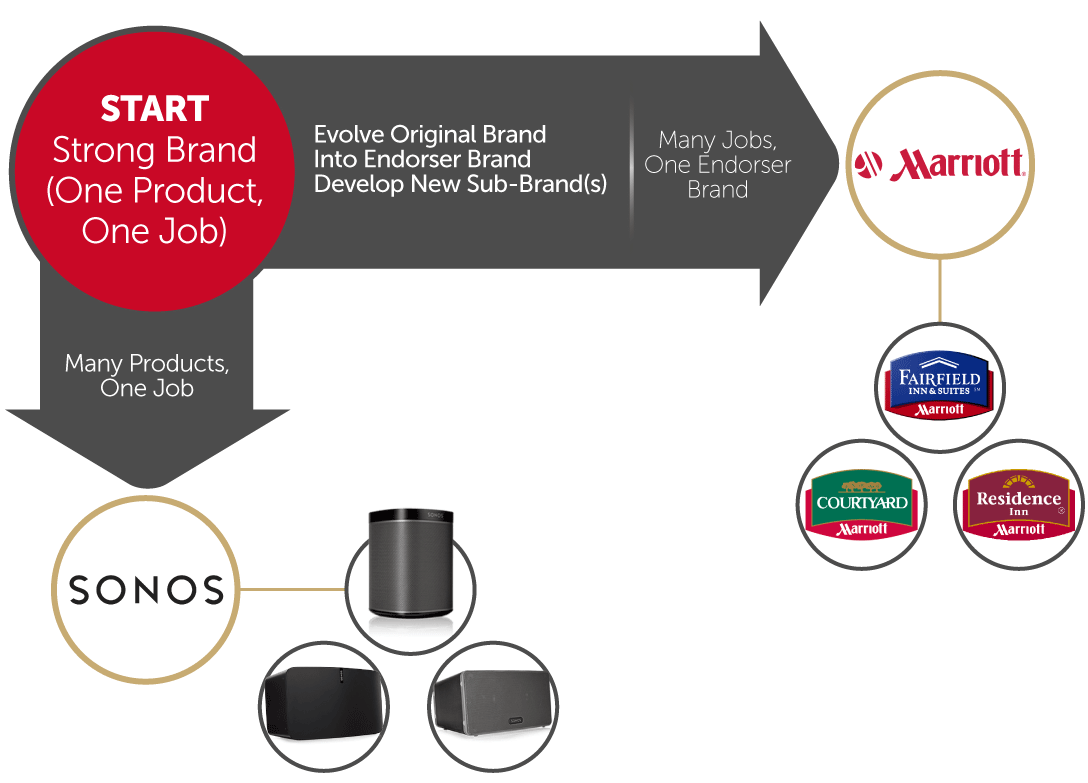How far can you extend your brand?
There are obvious opportunities in extending a brand, from reaching new consumer segments to defending scarce shelf space, but many rightly worry about the longer-term downsides, most notably diluting the meaning of the brand.1,2
How far can a brand be stretched? Authors Christensen, Cook and Hall provide a simple approach for thinking through extensions.3 A strong brand stands for something meaningful in customers’ minds—it is associated with a particular purpose or doing a specific job. Extending to additional products that do the same job in new ways (i.e., product extensions) is a straightforward way to extend under one brand. For example, Sonos is a strong brand for wireless music. Extending to different varieties of speakers under the same brand makes sense.
But a brand extension that gets away from the original brand purpose is likely to dilute the brand and cause confusion, ultimately eroding the brand by leaving brand-related expectations unfulfilled by a product designed to do something else.
How to extend your brand

Extending the brand beyond the original job usually necessitates the original brand evolving to play the role of endorsing new sub-brands that specifically address the new job or category. For example, when Marriott International expanded beyond its original full-service hotel brand designed for uses such as large meetings, Marriott became the endorser to new dedicated offerings—Courtyard by Marriott for individual business travelers, Residence Inn by Marriott for longer-term travelers, etc. When Unilever introduced a men’s line of products within the Dove brand, it was done under a new sub-brand of Dove Men+Care (with clearly differentiated packaging and other marketing). Dove provided the endorsement to believe in the new brand, but the new brand signified that it was meant for a new job/audience.
In order to extend your brand, the purpose of the brand must itself be very clear at the outset. All extensions must engage in this same purpose, or new sub-brands and a clear brand architecture must help customers understand the relationship between the various products and the parent brand.
As you consider your marketing strategy going forward, how will you ensure that your products all support each other and work to the same purpose?
Selected sources:
- AdAge Sep 2009, http://adage.com/article/al-ries/ries-line-extensions-brand/138797/
- Hardie, Lodish, 1994, “The Logic of Product Line Extensions,” HBR
- Christensen, Cook and Hall, 2005, “Marketing Malpractice: The Cause and the Curse,” HBR
